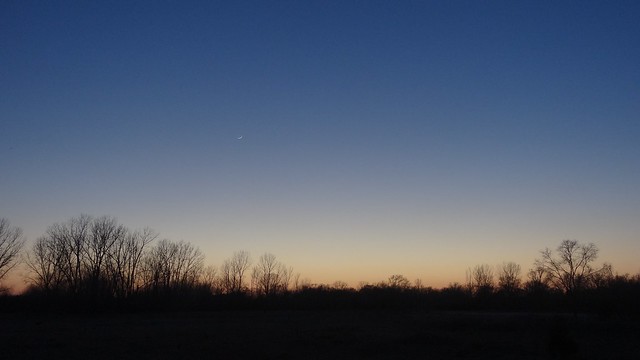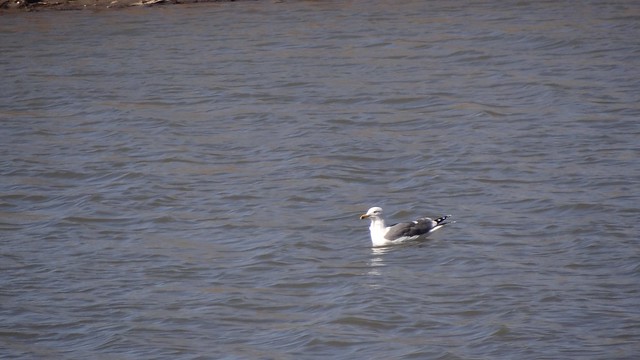My Nebraska tour is off to a great start — and with a great group, which makes me look forward even more to the rest of the week.
We started yesterday afternoon with some waterfowl watching near the airport, relishing close-up views of lesser scaup and redheads. I’d been worried that the fancy gulls of the day before might be gone, but sure enough, one of the first we saw on approaching the bleak marina at Dodge Park was an adult lesser black-backed gull, squabbling with the abundant ring-billed gulls over surprisingly large but obviously tasty dead fish. The day’s first bald eagles were here, too, perched impassive over the whole scene.
After an early supper at La Mesa, we moved across to Lake Manawa, where many thousands of gulls were streaming in to roost. Another adult lesser black-backed joined the flock, and most of us caught at least glimpses of three or four Franklin’s gulls out there in the horde; I’m hoping for more and closer views of this most handsome of North American larids.
The coloring of the skies reminded us that it would soon be woodcock time. We took our places in a traditionally good spot and watched the creatures of the night emerge, among them a few white-tailed deer and what I imagine will turn out to be the tour’s first great horned owl. Promptly at eight came the first nearby buzzings, and a few minutes later half a dozen birds were peenting and skydancing all around us. Several flashed right through the group as they took off in display flight — happily, no puncture wounds from the big-nosed lovebirds.
Best of all? Standing in the evening light without a coat. Spring on the Great Plains: you can never tell!




